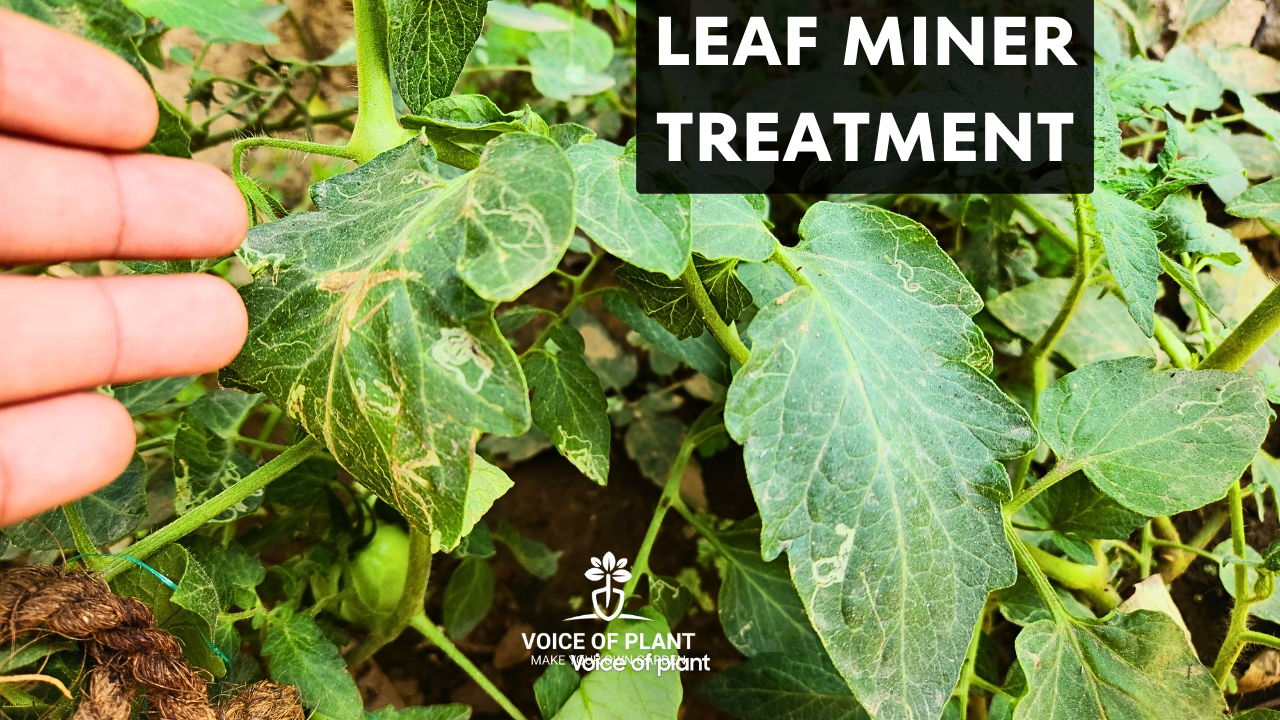How to Treat Leaf Miner in Tomato Plant
Leaf miners pose a significant threat to the health and yield of tomato plant. These tiny pests, typically the larvae of moths, flies, or beetles, tunnel into the leaves, leaving behind distinctive serpentine patterns that hinder the plant’s ability to photosynthesize.
If left unchecked, leaf miner infestations can severely compromise the overall health and productivity of your tomato plants.
Young saplings are particularly vulnerable and can die from severe infestations. Even if a mature plant survives heavy larval infestation, its growth will be stunted, and it may never reach its full potential unless treated promptly.
Moreover, fully grown healthy plants will suffer too, experiencing decreased flower and fruit yields due to severe infestations. Additionally, the openings created by leaf miners provide entry points for fungi and bacteria, causing leaves to yellow and eventually fall off the plant.
Furthermore, such infestations render green leafy edible plants unfit for consumption. However, with proactive management strategies, you can effectively control and minimize the impact of these pests.
Leaf Miner in Tomato Plant
Key steps to treat Leaf Miner from Tomato Plant
1. Vigilant Monitoring
Regularly inspect your tomato plants for any signs of leaf miner damage.
- Look for winding, white or brown trails on the leaves, as well as the presence of small, whitish maggots near the tunnels. Early detection is crucial for effective management.
2. Prune and Dispose
Immediately remove and dispose of any infested leaves to reduce the population of leaf miners.
- Be sure to dispose of the affected foliage away from your garden to prevent the larvae from completing their life cycle and re-infesting your plants.
3. Using Neem Oil as Organic Pest Control for Treating Leaf Miners
Neem oil is a popular organic pest control method for managing leaf miners in tomato plants. Here’s how to use it effectively:
1. Dilution:
- Mix neem oil with water according to the manufacturer’s instructions. Typically, you can use around 2 to 4 tablespoons of neem oil per liter of water.
2. Application:
- Use a spray bottle or garden sprayer to apply the neem oil solution to the affected plants.
- Make sure to cover both the upper and lower surfaces of the leaves, as leaf miners can be present on either side.
3. Frequency:
- Apply the neem oil solution every 3 to 5 days. Consistent application is crucial to disrupt the life cycle of leaf miners.
4. Timing:
- Apply neem oil in the evening only to avoid exposing plants to direct sunlight, which can cause leaf burn.
5. Clean leaves with fresh water
- On the next day, clean the leaves with fresh water using a spray bottle every morning.
6. Repeat:
- Continue applying neem oil until the leaf miner infestation is under control. Be patient, as it may take several applications to see significant results.
6. Prevention:
- To prevent future infestations, continue using neem oil as a regular part of your pest management routine, especially during periods of high leaf miner activity.
|
Also, read: |
How to Prevent Leaf Miner in Tomato Plant
Prevention is the most effective method for controlling leaf miners. Here are some suggestions:
1. Regularly inspect plants:
- Check the leaves of susceptible plants and young seedlings frequently for any signs of damage. Leaf miners tend to target the first set of true leaves.
2. Examine new plants:
- Leaf miners can enter home gardens via new plants. When purchasing plants from a nursery or garden center, carefully examine the leaves for any signs of leaf miner infestation.
- Keep monitoring the plants for 2 to 3 weeks after bringing them home, as this is the typical life cycle of leaf miner larvae.
3. Maintain plant health:
- Healthy plants have better resistance against pests and diseases.
4. Keep garden areas clean:
- Certain weeds like chickweed, lamb’s quarters, and pigweed are favored by leaf miners, especially in the fall when other plants have become dormant.
- Removing these weeds can help reduce leaf miner populations.
|
Also, read: Leaf Curl in Tomato Plant – How to Treat Leaf Curl Disease? |
In conclusion, managing leaf miner infestations in tomato plants requires a multifaceted approach that combines vigilant monitoring, proactive measures, and environmentally friendly pest control methods. By adopting these strategies, you can effectively safeguard your tomato plants and ensure a healthy and productive harvest.
Follow our Social media channel:
1. Voice of Plant – YouTube Channel
2. Voice of Plant Facebook Page
3. Instagram Voice of Plant Channel
Happy Gardening!
